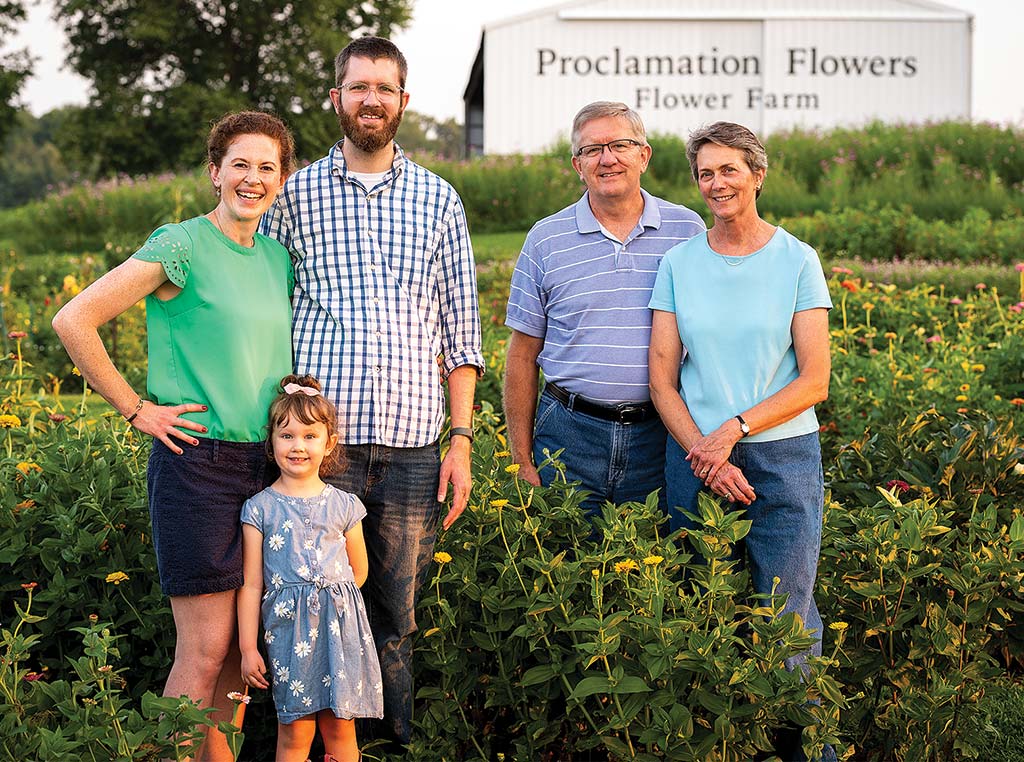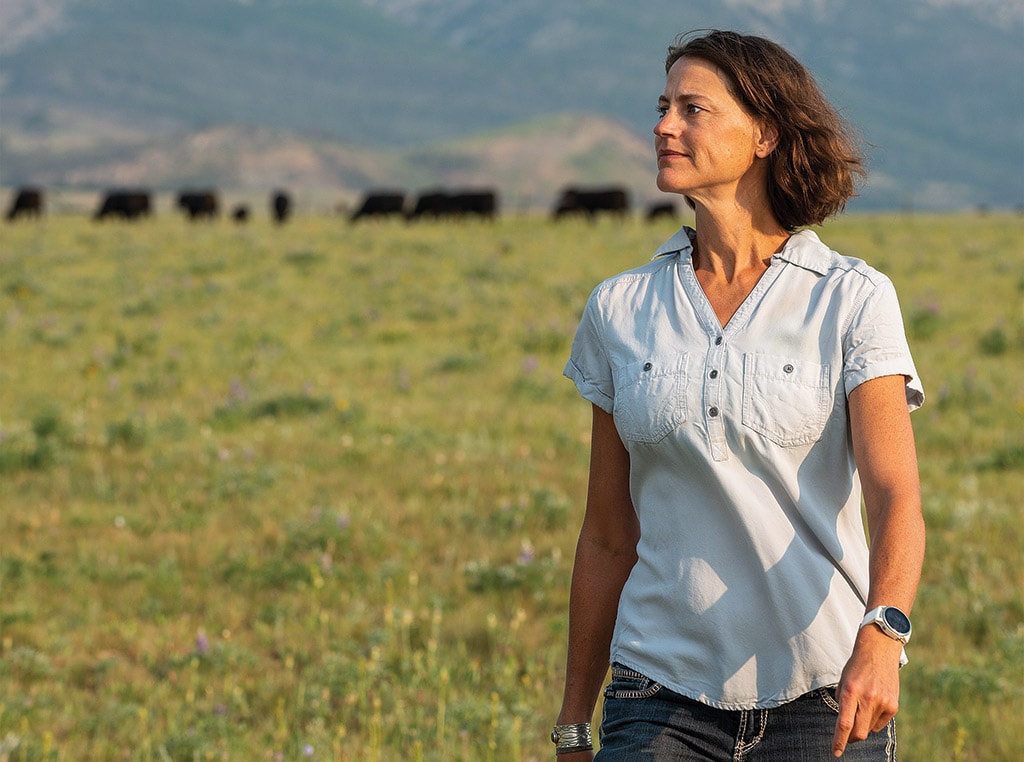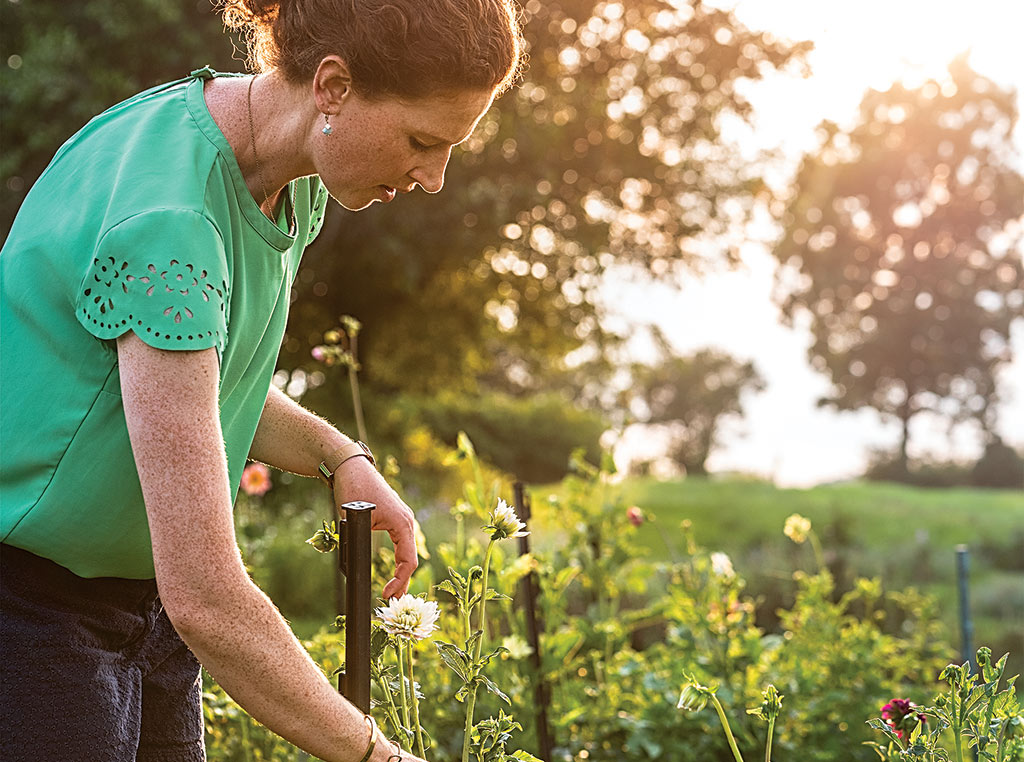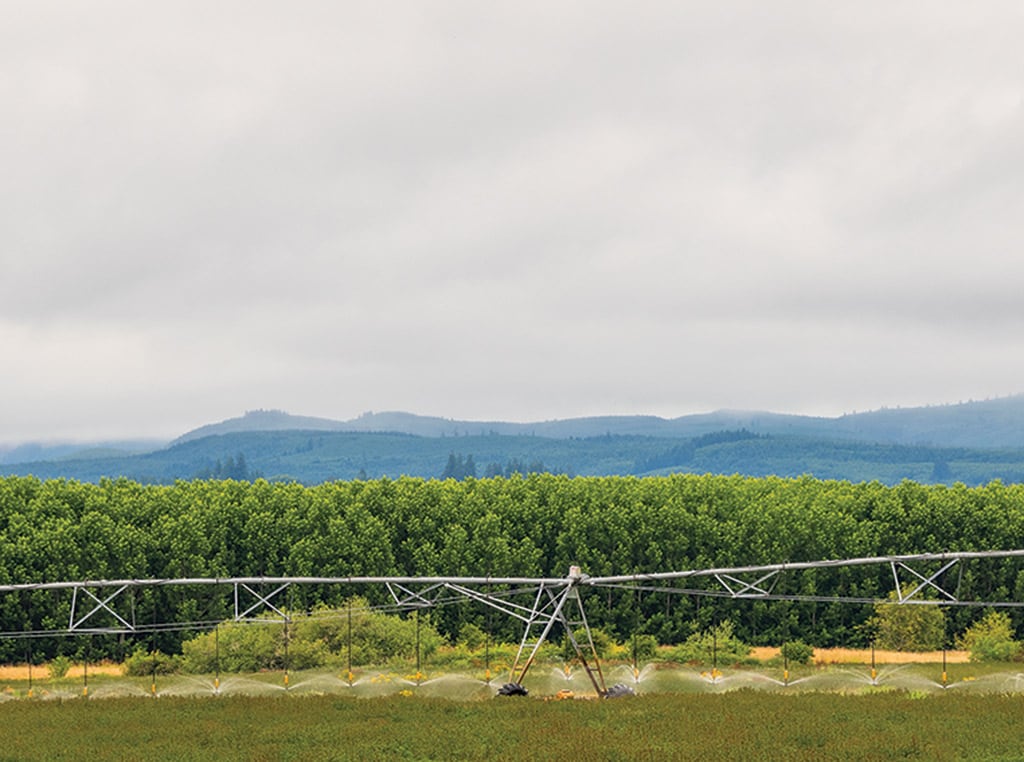Specialty/Niche December 01, 2021
Blossoms are Booming
Flower farming sprouts new love for the land.
“Contrary to what social media shows, growing flowers is not just pretty armfuls of flowers at sunset. There is a real science to it,” says Katie Francis, the farmer-florist behind Proclamation Flowers near Wilmington, Ill. “You cannot treat it just like a fanciful hobby.”
Katie shares this because she became a flower farmer and floral designer after seeing image after image of bright, cheery armfuls of flowers on Instagram. Those scenes sparked something in her she didn’t know she had and provided the literal roots she was looking to figuratively plant.
Back in 2016 Katie needed a creative outlet. She teaches American politics, which was quickly being flipped upside down. She knew she couldn’t use her old coping skills anymore. She was also searching for her spot in the community. Katie had just moved with her husband, Chris, to his hometown where his well-respected family has been for generations.
“Being someone who didn’t grow up in a small town nor on a farm, then marrying into a family that has really valued a place and put roots down, how do you enter into that? It was challenging,” Katie describes.
Trying to stop “doom scrolling” through social media that fall, Katie started following #flowers. And then #flowerfarmers.

Above. Katie, Mabel, Chris, Steve, and Judy Francis stand in their flower field, which was most recently a sheep pasture.
“Pretty soon, I was following every flower farmer I could find on social media, and my news feed was flooded with pretty pictures,” she remembers.
A sprouting industry. Katie was not the only one picking digital daisies and dreaming of growing real ones.
The number of cut flower farms in the U.S. jumped nearly 17% between 2012 and 2017, according to USDA census data. (Overall farm numbers declined 3% in that time.) Membership in the Association of Specialty Cut Flower Growers (ASCFG) more than doubled from 2012 to 2017, and since then, has doubled again.
“There is room for more flower farmers in the U.S. when you consider 80% of cut flowers are imported,” says ASCFG North and Central Regional Director Susan Rockwood. “But it is hard work to grow flowers commercially.”
Katie knew she needed to learn all the ins and outs before asking her in-laws to till up the sheep pasture and let her plant rows of annuals. She treated the new subject matter like anything else she has learned: read the textbooks and studied her notes. She then took a plant pathology class at the local junior college as the ultimate test of if she would like flower farming or not. She passed.
Chris’s parents live on the family farmstead where there have been any number of pigs, cattle, or sheep for decades. His dad, Steve, remembers being immediately open to Katie’s proposal.
“When my parents moved here in the 1950s,” Steve says, “they called it ‘The Grand Experiment to Raise a Family.’ That was my first thought; my dad would be beside himself to see what they have come up with.” Chris and Katie’s daughter, Mabel, represents the 4th generation on Oak Knoll Farm.
Fully rooted. “While it was a very random idea, flower farming was well chosen in that it could effectively use the strengths and assets we have and were in the Francis background,” Katie notes. “Chris’s parents are a wealth of information, and they, along with other family members, have taken interest and helped. They allowed me to have a piece of the place they value so much, and it is now my favorite place in the world.”
Having now finished their fifth season of growing, arranging, and selling flowers, Katie realizes the exact thing she sought to help her regain control (and fill her spare time and family’s idle pasture) has taught her how to let go a little.
“Pivoting seems like the name of the game in farming. You have to pivot with the weather and pivot with the soil. It has been a really beneficial attitude to adopt in all parts of my life,” she says.
In 2021, they welcomed private groups to pick flowers five nights a week and photography sessions the other two. They also sold 800 arrangements through subscriptions and special orders and provided flowers for 15 weddings. Their first year they sold at one farmers’ market a week. ‡
Read More

AGRICULTURE, FARM OPERATION
Working the Grind
Narrowing in on one high-volume product makes local beef work.


